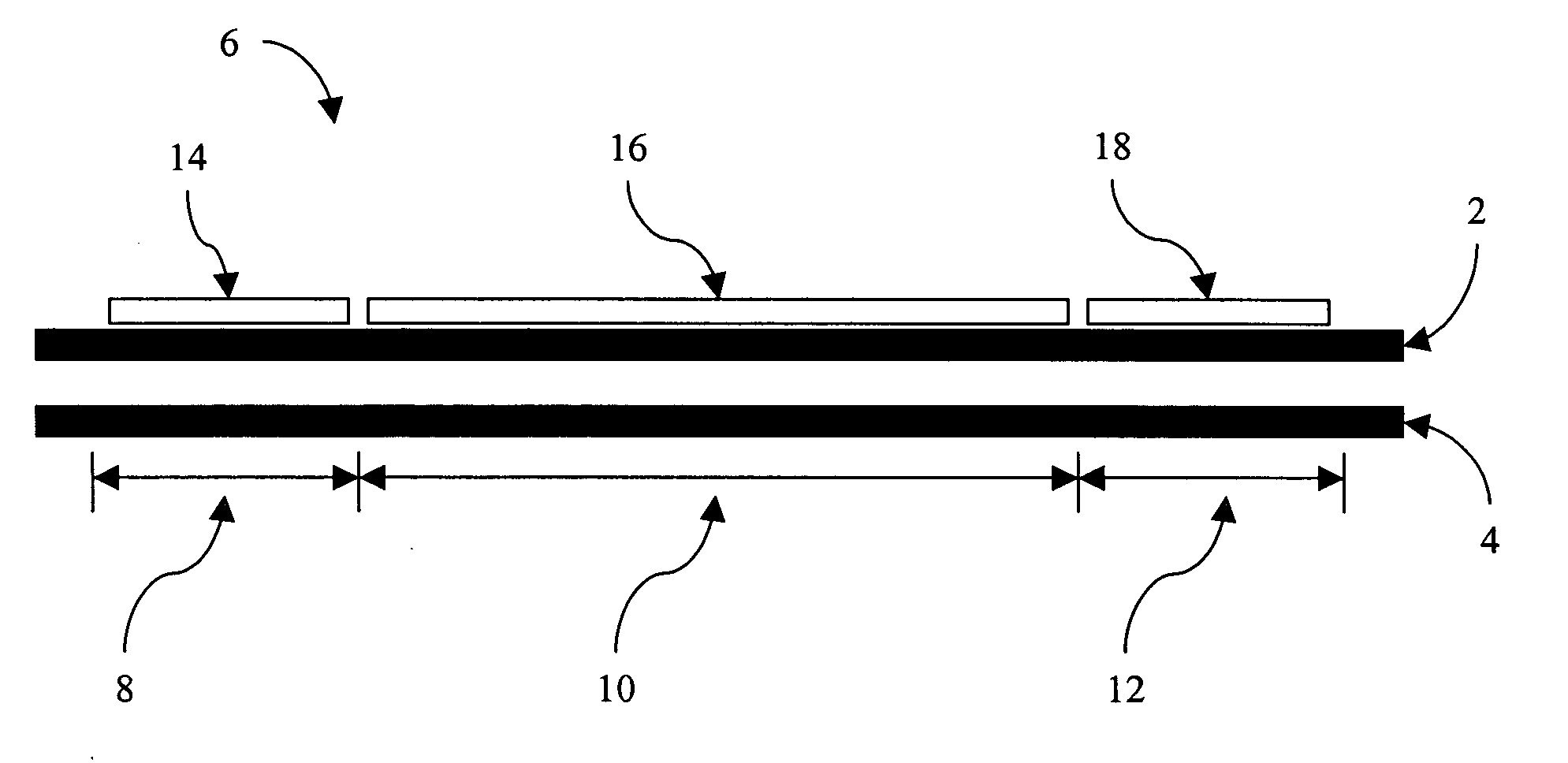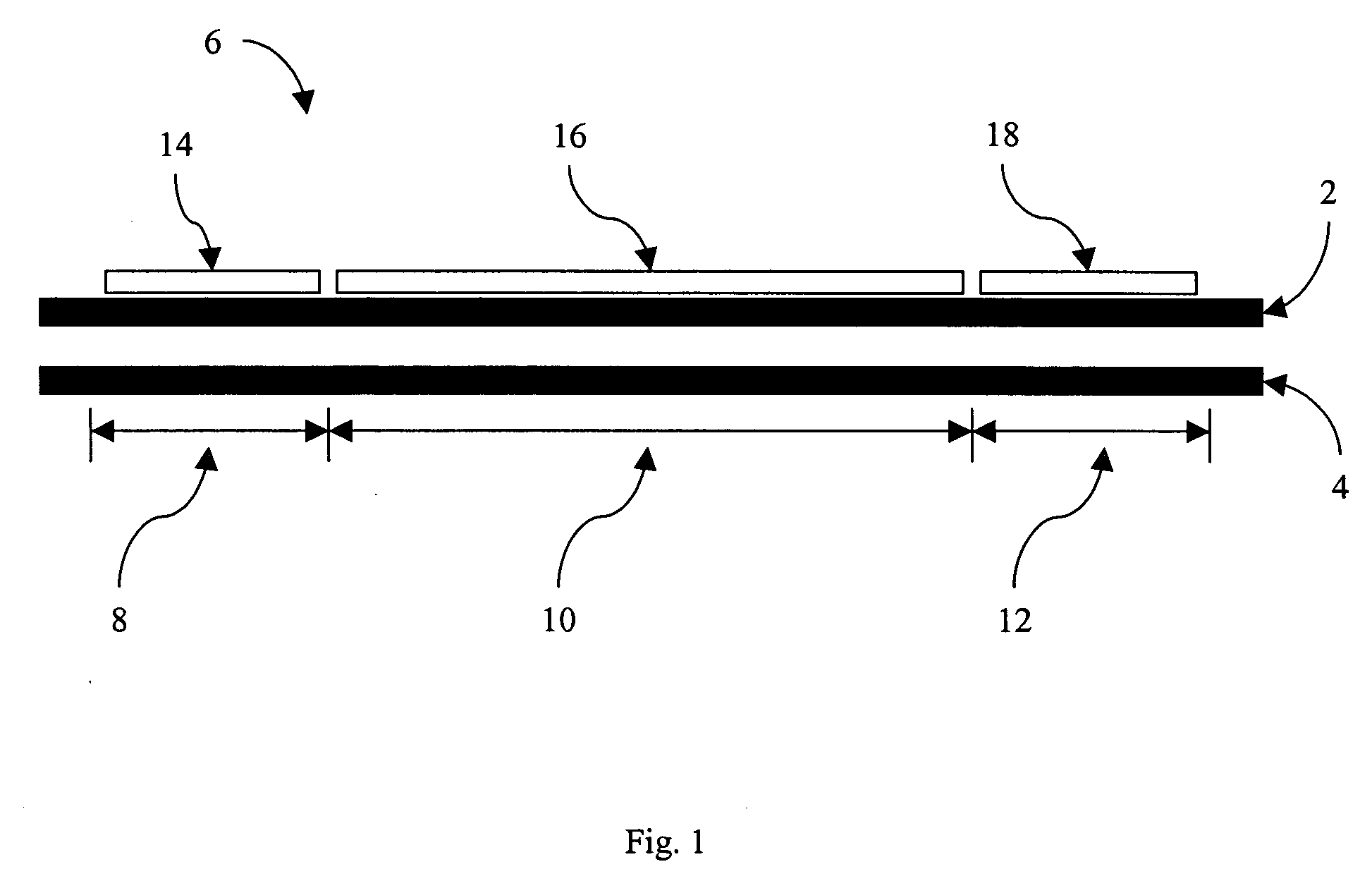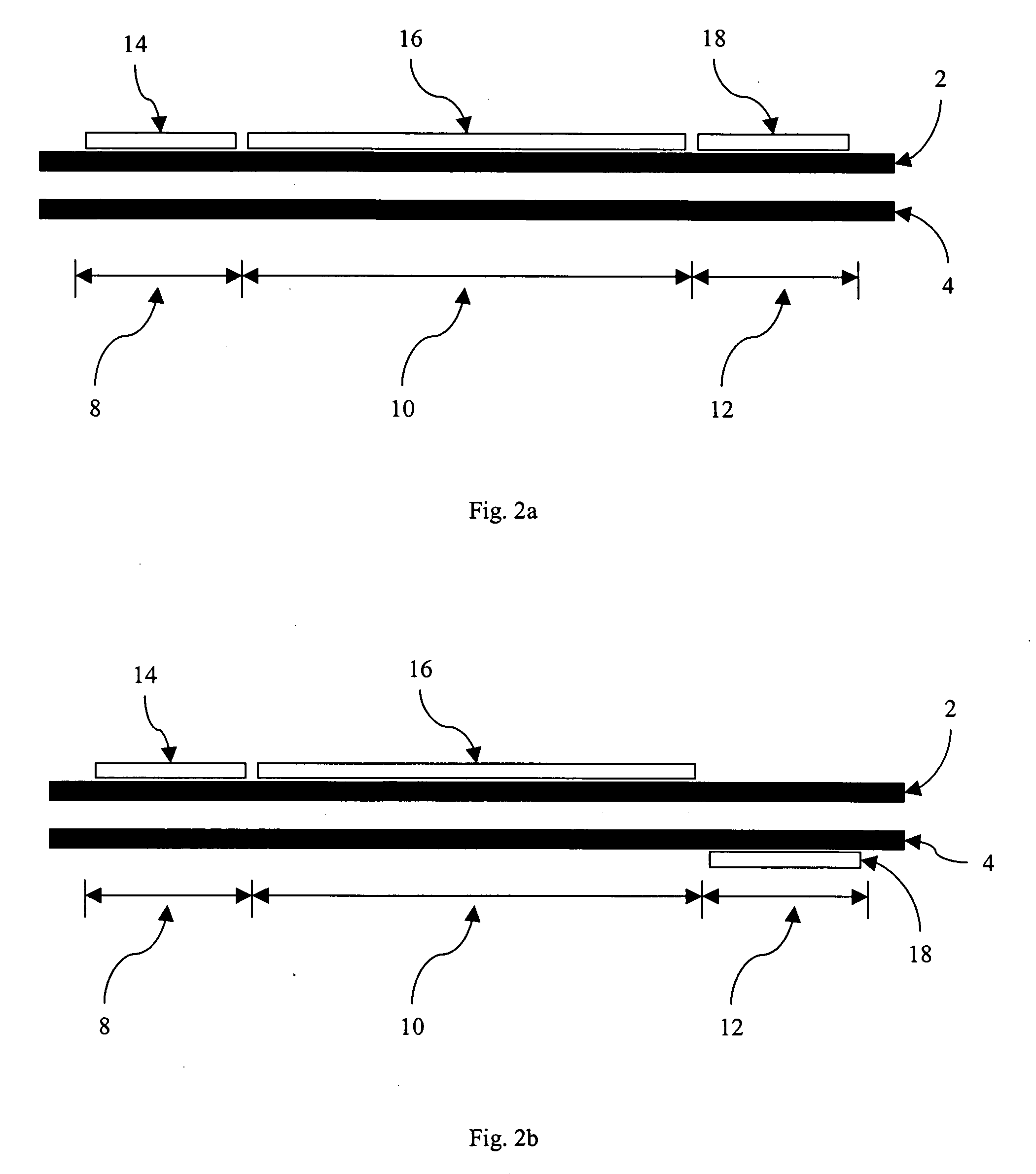Linear optical modulators and method of linear optical modulation
a linear optical modulator and optical modulation technology, applied in the field of optical modulators, can solve problems such as signal fidelity reduction
- Summary
- Abstract
- Description
- Claims
- Application Information
AI Technical Summary
Benefits of technology
Problems solved by technology
Method used
Image
Examples
examples
[0022] The following example(s) is illustrative and does not limit the Claims.
[0023] The following is a brief description of the method used to calculate spur-free dynamic range.
[0024] The optical modes that result from coupling electrical power (RF and DC) into the optical waveguides are calculated using methods such as that reported in Lin, et al. J. Lightwave Tech. 14(9), 2012 (1996). The optical modes for each section of the device are calculated separately. The output of first bias section is used as the input for the modulation section. The output of the modulation section is used as the input for the second bias section. The output of the second bias section is used as the input of the detector. The input of the detector is used to calculate SFDR. We assume that all noise, including the signal dependent shot noise, is additive. With this proviso, we can obtain a simple expression relating the microwave (RF) power out of the receiver Pout with the microwave power, Pin, incid...
PUM
| Property | Measurement | Unit |
|---|---|---|
| thickness | aaaaa | aaaaa |
| frequency | aaaaa | aaaaa |
| thickness | aaaaa | aaaaa |
Abstract
Description
Claims
Application Information
 Login to View More
Login to View More - R&D
- Intellectual Property
- Life Sciences
- Materials
- Tech Scout
- Unparalleled Data Quality
- Higher Quality Content
- 60% Fewer Hallucinations
Browse by: Latest US Patents, China's latest patents, Technical Efficacy Thesaurus, Application Domain, Technology Topic, Popular Technical Reports.
© 2025 PatSnap. All rights reserved.Legal|Privacy policy|Modern Slavery Act Transparency Statement|Sitemap|About US| Contact US: help@patsnap.com



